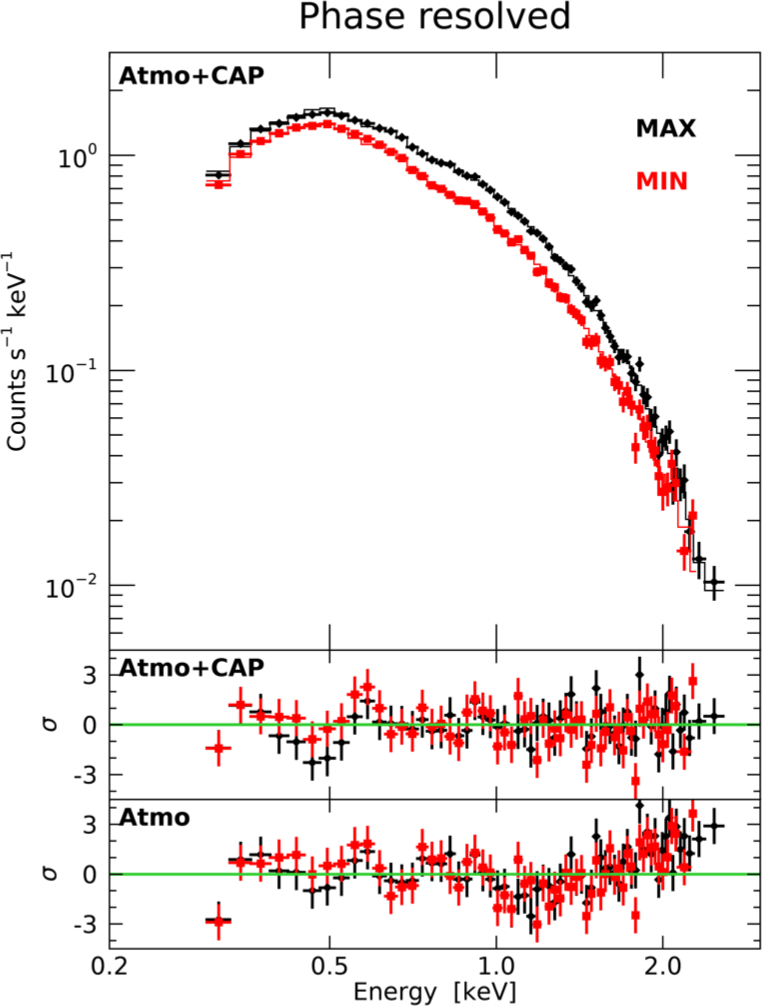NICER / ISS Science Nugget
for November 4, 2021
NICER Timing and Spectroscopy of an Unusual Young Pulsar
Among the thousands of cataloged Milky Way neutron stars, a few stand out for their peculiar properties. One enigmatic object earned a nickname, "Calvera," before it was identified as a pulsar. Unlike most young neutron stars, which are seen to pulse predominantly in the radio and gamma-ray parts of the electromagnetic spectrum, Calvera (a.k.a. PSR J1412+7922) only appears to pulse in X-rays. Its rapid spin, revolving once around every 59 milliseconds, and the rate at which this spin slows down, identify it conclusively as a relatively young neutron star, formed less than 300,000 years ago. All such objects are found to lie within the plane of our Galaxy, as expected because the stars from which they form define the disk of the Milky Way. But Calvera is an exception -- it lies nearly 2,000 parsecs (6,500 light-years) above the Galactic plane, and is seen to be moving away from it at high speed, perhaps as high as 1,000 km/sec.
NICER has observed Calvera regularly for the last 4-plus years. A pulse timing and spectroscopy study by S. Mereghetti (INAF, Italy) and collaborators has recently been accepted for publication in The Astrophysical Journal. The timing analysis has enabled a very deep search for gamma-ray pulsations in data from NASA's Fermi telescope, but no such pulsations were found, cementing Calvera's strangeness as an X-ray-only pulsar. The researchers also find that modeling the X-ray emission as a combination of low-temperature emission from the entire star's surface, supplemented by higher-temperature radiation from the magnetic polar caps, provides a good description of the X-ray pulsations and their energy spectrum (see figures below). The implied thermal luminosity is consistent with a large distance to the pulsar, supporting extremal values for both its height above the Galactic disk and its velocity. How this pulsar came to be in this situation remains unclear -- it was either born in the explosion of a rare "runaway" massive star, exiting the Galactic plane at high speed, or through an exotic hypothesized event such as the collapse of a white dwarf (due to accretion from a companion star) already located far above the disk.


Figure: Left - Pulse profile of the isolated neutron star Calvera, integrated across the photon energy band 0.4-2.0 keV, obtained with NICER (black points); and a simulated profile based on a fitted model (red histogram). Both are plotted twice for clarity. The blue bands represent the phase intervals from which the spectra in Figure 2 were extracted. Right - Top panel: Photon energy spectra from the minimum and maximum pulse phase intervals (red and black points, respectively), and the best-fit model (histograms) for emission through a stellar atmosphere from the entire neutron star surface as well as heated magnetic-pole caps. Lower panels: Residuals (data minus model) of the spectral fits to models with and without heated polar caps; the model that includes polar-cap emission provides a better fit to the data.
<< Previous
Main Index